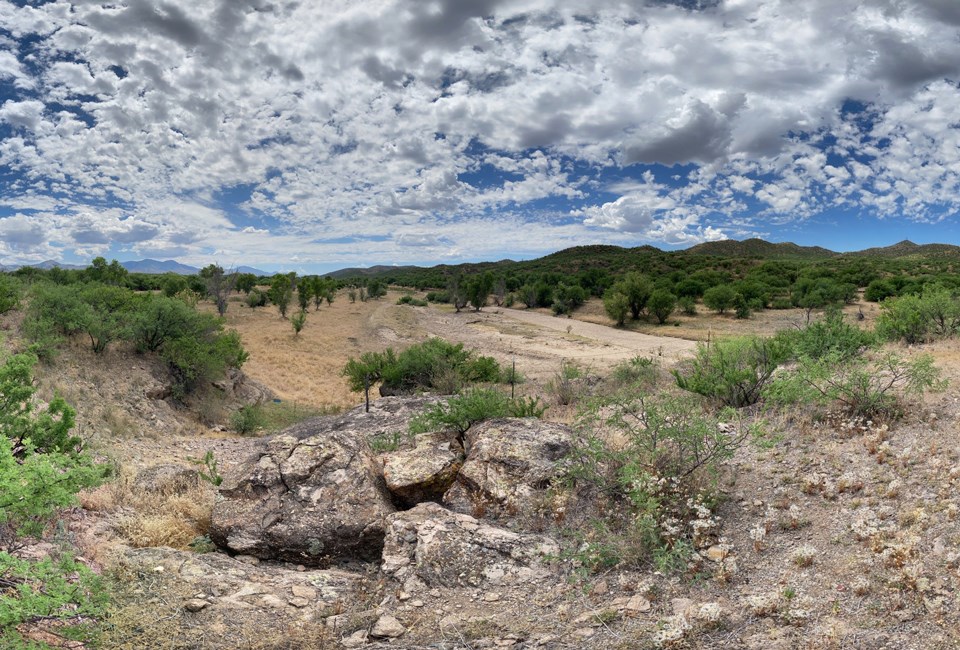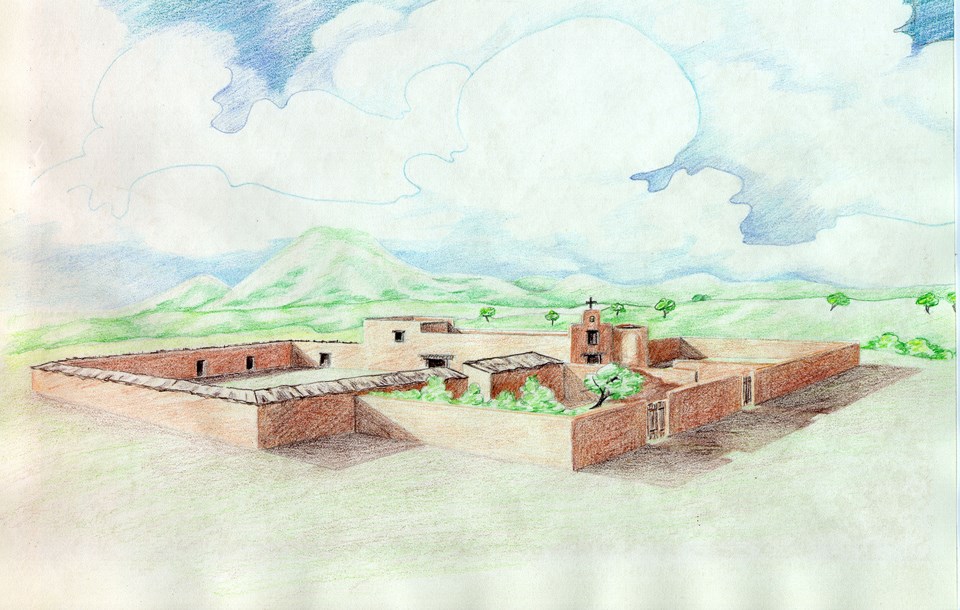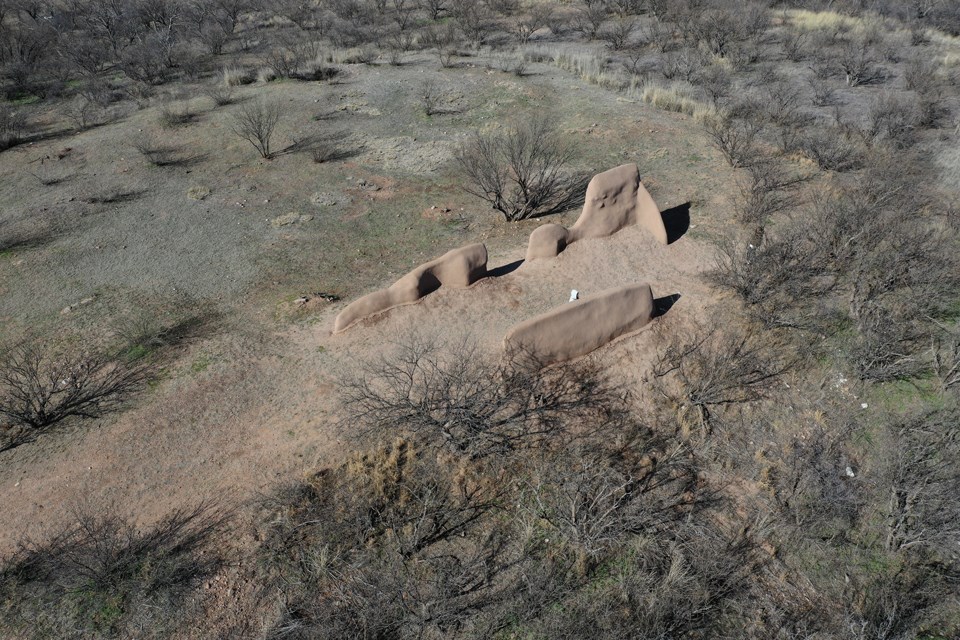
Guevavi is a name derived from the O'odham word for big spring, ge'e vavi, or big well, gu waihe. This settlement of O'odham people was first visited in January 1691 by Catholic Jesuit Fathers Kino and Salvatierra. They established it as a mission, naming it San Gabriel de Guevavi. Subsequent missionaries called it San Rafael and San Miguel, resulting in the common historical name of Los Santos Ángeles de Guevavi. 
Jeff Burton In 1701, Guevavi was established as a district headquarters and Juan de San Martin was assigned as the first resident priest. A small church was started that same year. Father San Martin left in 1703. Fathers Agustín de Campos and Luis Xavier Velarde visited occasionally after that. Father Grazhoffer, in 1732, reestablished Guevavi as cabecera and completed the church. Unfortunately, he died the following year - possibly of poison. Father Garrucho, resident priest from 1745 to 1751, recorded 148 burials, many from disease. In 1751, Father Garrucho contracted the building of a 15 foot by 50 foot church, the ruins of which still exist today. The first captain of the Tubac presidio, Juan Tómas de Beldarrain, was wounded by Seri Indians and died at Guevavi. His body lies buried beneath the altar steps of the church. The mother of Captain Juan Bautista de Anza, Beldarrain's replacement, is also buried in front of the altar.The Pima revolt of 1751, later Apache raids, disease, and the removal of the Jesuits in 1767 caused much disruption to mission life. The first Franciscan priest, Juan Crisóstomo Gil de Bernabé, arrived in 1768 and began the mission with about fifty families. Unfortunately the Apaches attacked in 1769 and killed all but two of the few Spanish soldiers guarding the mission. In 1770 and 1771, the Apaches continued their attacks and the cabecera was moved to Tumacácori. Antonio de los Reyes, Bishop of Sonora, on 6 July 1772 wrote a report on the condition of the missions in the Upper and Lower Pimeria Alta. 
Architectural Conservation Laboratory, Weitzman School of Design, University of Pennsylvania Guevavi was abandoned for the last time in 1775. After sitting forlornly abandoned since the 1770s, Guevavi's ruins were added to Tumacácori National Historical Park in 1990. The late Ralph Wingfield, a local rancher, donated the ruins to the Archaeological Conservancy which, in turn, donated it to the National Park Service. Visit GuevaviGuided tours to Guevavi and Calabazas are offered by reservation during the months of January, February, and March. |
Last updated: May 6, 2025
